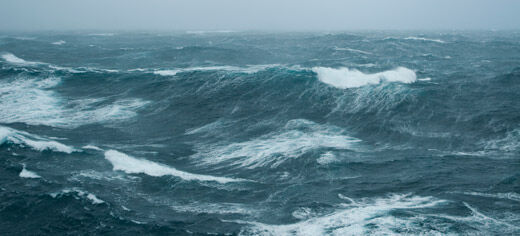
Better forecasting of violent storms, such as those battering the British Isles over the past few weeks, could be possible in the future.
A team of researchers has been flying a dedicated research aircraft directly into these powerful storms to obtain the data they need to help predict extremely stormy weather.
The DIAMET project (Diabatic influences on mesoscale structures in extratropical storms) involves scientists from the universities of Leeds, Manchester, Reading and East Anglia together with scientists from the Met Office, and is led by the Natural Environment Research Council's National Centre for Atmospheric Science (NCAS).
Just a few days ago, on 8 December, the DIAMET team flew into the heart of the most disruptive, violent cyclone that Scotland has experienced in decades. They carried out comprehensive observations and data recordings of temperature, humidity and wind speed as well as the microphysical properties of clouds and their interaction with the ocean surface.
Professor Geraint Vaughan, the project leader, explains why collecting this data is so important.
"In extreme storms the condensation and evaporation of water are thought to play a crucial role in storm development, as these processes release - or take in - heat when clouds are formed, raindrops evaporate or moisture leaves the sea surface.
"These diabatic processes transfer energy within the weather system, changing the way it develops and the location and strength of the peak winds or heaviest rainfall. For example, evaporation of falling raindrops is thought to accelerate the downward movement of very high winds in the so-called sting jets that form in particularly ferocious storms and are not yet fully understood."
A strong jet stream blowing high in the atmosphere over the North Atlantic has been driving these storms and guiding them directly over the British Isles. The storms have brought disruption, particularly in Scotland, which has suffered schools closures, travel disruption, structural damage to bridges and buildings, and loss of power to around 50,000 people.
Although meteorologists are much better equipped to predict these major storms more accurately than they could in the past, there are small pockets of violent weather that are very difficult to forecast.
Dr Peter Knippertz and Tomasz Trzeciak from the School of Earth and Environment, University of Leeds, were among the DIAMET scientists who flew into the eye of the storm on December 8.
Dr Knippertz said scientists' observations from the aircraft and Met Office modelling on the ground both matched what scientists knew about "sting jets", although the data would have to be analysed over the next month before they knew for sure. He said: "The interesting thing about this storm was the cloud bands that wrapped around the centre of the low pressure system, which tend to only occur in the most intense storms. These extremely well defined cloud bands are closely connected to the idea of a sting jet."
Only a handful of cases of sting jets have been recorded in the past few years.
Professor Doug Parker, a Professor of Meteorology at the University of Leeds, said the quality of data obtained from the storm was unprecedented. He said: "Ground based measurements are on a fixed network, so wind features on this scale are not well captured. Everyone in the DIAMET team is very excited by this. We had hoped to get something like this but we never believed we'd capture such a significant storm."
Professor Vaughan said: "We have gathered some really exciting measurements and look forward to using these to improve the forecasting of future storms involving strong winds and extremely heavy rainfall. The challenge is to do this on the scale of counties rather than countries so that people can be better prepared for the storms."
As well as the Scottish storm, the DIAMET project team has flown in the heavy rainfall over the southwest of England at the end of November; into the storm of 1 December which battered the Shetland and Orkney Islands; and the heavy rain and strong winds of 12-13 December over England.
DIAMET is funded by the Natural Environment Research Council (NERC).
Notes for editors
1. The research aircraft is a modified passenger jet that has been refitted to carry a range of state-of-the-art equipment, measuring the properties of the air in which the plane flies. The BAe146 is managed by the Facility for Airborne Atmospheric Measurement, a joint operation between NERC's National Centre for Atmospheric Sciences and the Met Office.
2. A team of 16 aircrew and scientists work on each flight, some operating specialised instruments, and others analysing the data in real time so that changes can be made to the flight pattern as a storm develops.
3. Professor Geraint Vaughan is the NCAS Director of Weather Research, based at the University of Manchester.
For further information:
Please contact the University of Leeds Press Office on +44 (0)113 343 4031 or email pressoffice@leeds.ac.uk
NERC Press Office, Tel. 01793 411727 / 511561, Email: pressoffice@nerc.ac.uk